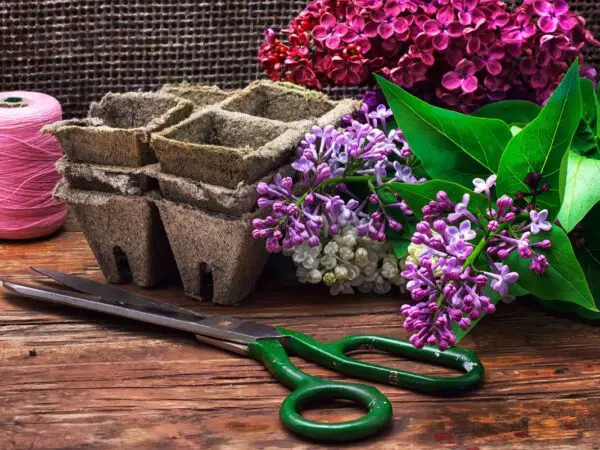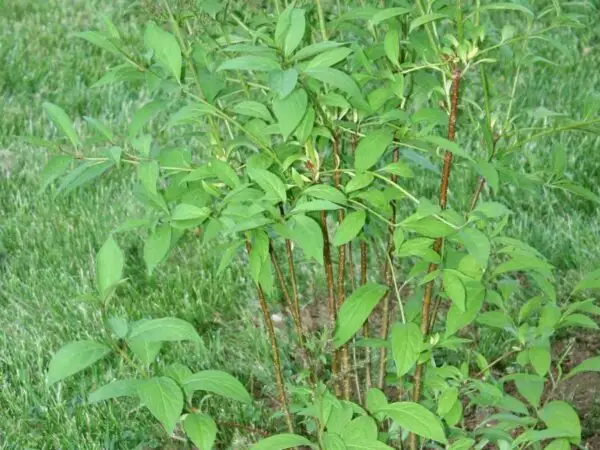Starting a lilac bush from a cutting is an enjoyable and rewarding gardening project that anyone can master with the right guidance. In this post, we will walk you through the simple steps to successfully propagate a lilac bush from root cuttings, allowing you to expand your garden with new plants and beautiful blooms.
Key Takeaways
- Understanding the basics of lilac propagation is essential before starting the process.
- Preparing lilac cuttings correctly can significantly impact the success of propagation.
- There are different rooting methods available, including water rooting and soil rooting.
- Follow specific steps for water rooting and soil rooting to increase the chances of successful propagation.
- Providing proper aftercare for cuttings is crucial for their growth and development.
- Enhance the success of lilac bush growth by troubleshooting common issues and following seasonal care tips.
Lilac Propagation Basics
Choosing Cuttings
Select healthy, disease-free lilac branches for cuttings. Choose cuttings with green terminal shoots to ensure successful propagation. Opt for cuttings that are four to six inches long for ideal results.
Best Time
Take cuttings during the early morning when plants are most hydrated. Propagate lilac cuttings in the spring or early summer for higher success rates. Avoid taking cuttings during extreme weather conditions for better rooting outcomes.
Required Tools
Prepare sharp, clean pruning shears for precise cutting. Have a rooting hormone like IBA ready to promote root development. Keep a potting mix of peat, vermiculite, and perlite on hand for planting cuttings.
Preparing Lilac Cuttings
Cutting Technique
To start a lilac bush from a cutting, make a clean, angled cut just below a node to enhance rooting. Removing any flowers or buds from the cutting helps redirect energy towards root growth. Remember not to leave the cutting out for too long after taking it to prevent wilting.
Leaf Trimming
When propagating a lilac bush, trim excess leaves to reduce moisture loss, cut and encourage root development. It's essential to leave a few leaves on the cutting as they aid in producing carbohydrates for rooting. Trim or cut any damaged or yellow leaves to prevent rotting during the propagation process.
Rooting Methods Overview
Water Rooting
- Place cuttings in water to stimulate root growth before planting in soil.
- Change the water regularly to prevent stagnation and bacterial issues.
- Ensure the cuttings stay submerged for successful rooting by monitoring water levels.
Soil Rooting
- Plant cuttings in well-draining soil to avoid overwatering.
- Maintain consistent moisture levels to support healthy root development.
- Choose a soil mix with good aeration for optimal root growth.
Water Rooting Steps
Container Selection
Plant individual cuttings in small containers for optimal root establishment. Choose containers with drainage holes to prevent waterlogging and root rot. Opt for clear containers to easily monitor root growth without disturbing the cutting.
Changing Water
Regularly replace the water in the rooting container every few days to avoid stagnation. Use room temperature water to prevent shocking the developing roots. Ensure that the water is clean and free from contaminants to promote healthy root growth.
Root Monitoring
Regularly check the cuttings for any signs of roots starting to develop. Gently tug on the cutting to assess resistance, indicating root growth. Observe the color and texture of the roots to evaluate their health and progression.
Soil Rooting Process
Soil Mix
Prepare a well-draining soil mix with peat, vermiculite, and perlite for optimal root growth. Ensure the mix is moist but not waterlogged to support root development. Use sterile soil to prevent harmful pathogens.
Planting Depth
Plant the cutting at the appropriate depth to promote root establishment. Ensure at least two nodes are buried for robust root growth. Avoid planting too deep, hindering root development.
Moisture Control
Maintain consistent moisture levels in the soil to support root growth. Avoid overwatering leading to root rot and fungal diseases. Use a spray bottle to mist leaves and soil for hydration.
Aftercare for Cuttings
Sunlight Requirements
- Place the cuttings in a spot with bright, indirect sunlight to aid their growth.
- Avoid direct sunlight as it can harm the delicate cutting by causing scorching.
- During peak heat hours, ensure to provide shade to prevent wilting of the cuttings.
Fertilizing
- Hold off on fertilizing the cuttings until they have established roots securely.
- Once roots have developed, use a diluted, balanced fertilizer to support growth.
- Apply the fertilizer in moderation to prevent any damage or burning to the young roots.
Transplanting Time
- Only proceed with transplanting once the cutting has grown a robust and healthy root system.
- When transplanting, move the cutting into a larger container or your garden after ensuring that the roots are well-established.
- Be gentle and cautious while handling the cutting during transplanting to avoid harming its delicate roots.
Troubleshooting Common Issues
Root Rot
To prevent root rot, ensure the soil mix has proper drainage to avoid waterlogged conditions. Overwatering can lead to this issue, so adjust watering practices accordingly. If root rot occurs, promptly trim affected roots and modify watering routines.
Slow Growth
Address slow growth by checking root development and adjusting care practices as needed. Ensure the cutting gets enough sunlight and moisture for optimal growth. Consider using a rooting hormone to stimulate root growth and enhance overall plant development.
Enhancing Growth Success
Mycorrhizal Fungi
Introducing mycorrhizal fungi to the soil mix can significantly boost root development. These beneficial fungi establish a symbiotic relationship with plant roots, enhancing nutrient absorption. Follow the manufacturer's instructions when using mycorrhizal fungi products for optimal outcomes.
Humidity Dome
Craft a humidity dome by utilizing a clear plastic bag to maintain adequate moisture levels around the cuttings. Placing the humidity dome over the cuttings creates a mini greenhouse environment, promoting growth. Remember to ventilate the humidity dome regularly to prevent issues like mold and fungal growth.
Seasonal Care Tips
Winter Protection
Provide winter protection by mulching around the base of the lilac bush. Shielding from harsh winter winds is crucial to prevent desiccation. Consider wrapping the bush with burlap for additional insulation during the colder months.
Pruning Time
After lilac bushes have finished flowering, it's time to prune them to shape and rejuvenate the plant. Removing dead or diseased branches is essential for promoting overall plant health. Avoid heavy pruning since lilacs bloom on old wood, excessive pruning can reduce flowering.
Final Remarks
You now possess the essential knowledge to successfully propagate lilac bushes from cuttings. By understanding the basics of lilac propagation, preparing and rooting your cuttings using the outlined methods, and providing proper aftercare and seasonal care, you are well-equipped to enhance growth success and troubleshoot common issues that may arise. Remember to implement the tips shared here to ensure your lilac cuttings thrive and bloom beautifully in your garden.
Take action today! Start propagating your own lilac bushes from cuttings and witness the rewarding process of nurturing new growth. Share your successes with fellow gardening enthusiasts and continue exploring new ways to expand your plant propagation skills. Your journey to creating a vibrant lilac garden starts now.
Frequently Asked Questions
How do I select the best lilac cuttings for propagation?
Choose healthy, disease-free stems that are flexible but not too young or old. Opt for sections with no flowers and at least two leaf nodes. Cut at a 45-degree angle below a node.
Can I propagate lilac cuttings in water instead of soil?
Yes, you can root lilac cuttings in water. Change the water every few days to prevent rotting and ensure the cut end is submerged. Once roots grow to about an inch, transplant them into soil.
What is the best rooting method for lilac cuttings?
Lilacs root well in both water and soil. Water rooting allows you to monitor root growth easily, while soil rooting provides a more natural transition for the cutting once rooted.
How long does it take for lilac cuttings to root successfully?
On average, lilac cuttings take around 4-6 weeks to develop roots successfully. Factors like temperature, humidity, and cutting health can influence the rooting time.
How should I care for lilac cuttings after they have rooted?
After rooting, gradually acclimate the new plants to direct sunlight. Keep the soil consistently moist but not waterlogged. Protect them from harsh weather conditions until they establish stronger roots.
Image Source: Paid image from CANVA





